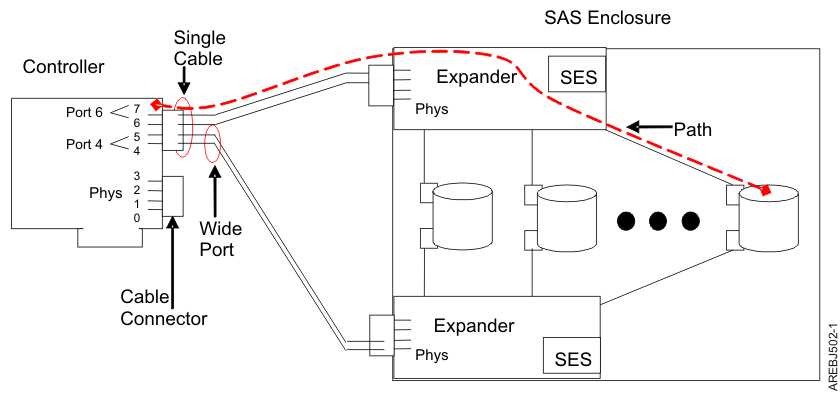Serial-attached SCSI (SAS) architecture defines a serial device interconnect and transport protocol that defines the rules for information exchange between devices.
SAS is an evolution of the parallel SCSI device interface into a serial point-to-point interface. SAS physical links (phys) are a set of four wires used as two differential signal pairs. One differential signal transmits in one direction, while the other differential signal transmits in the opposite direction. Data can be transmitted in both directions simultaneously. Phys are contained in SAS ports which contain one or more phys. A port is a wide port if there are more than one phy in the port. If there is only one phy in the port, it is a narrow port. A port is identified by a unique SAS worldwide name (also called SAS address).
A SAS controller contains one or more SAS ports. A path is a logical point-to-point link between a SAS initiator port in the controller and a SAS target port in the I/O device (for example a disk). A connection is a temporary association between a controller and an I/O device through a path. A connection enables communication to a device. The controller can communicate to the I/O device over this connection by using either the SCSI command set or the ATA/ATAPI command set depending on the device type.
A SAS expander enables connections between a controller port and multiple I/O device ports by routing connections between the expander ports. Only a single connection through an expander can exist at any given time. Using expanders creates more nodes in the path from the controller to the I/O device. If an I/O device supports multiple ports, more than one path to the device can exist when there are expander devices included in the path.
A SAS fabric refers to the summation of all paths between all SAS controller ports and all I/O device ports in the SAS subsystem including cables, enclosures, and expanders.
